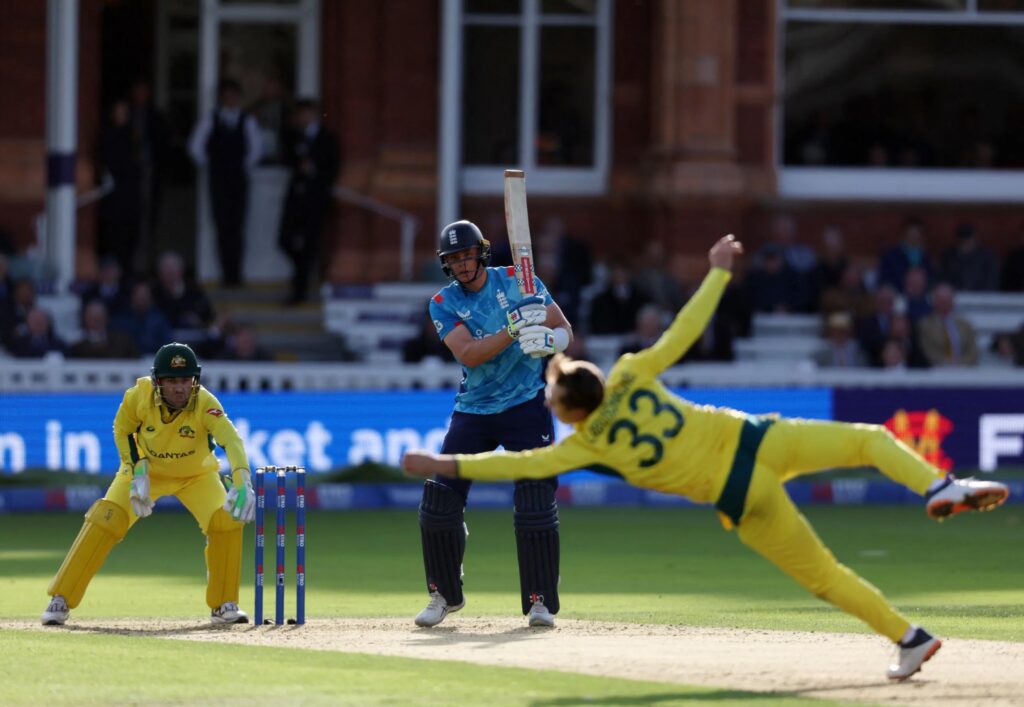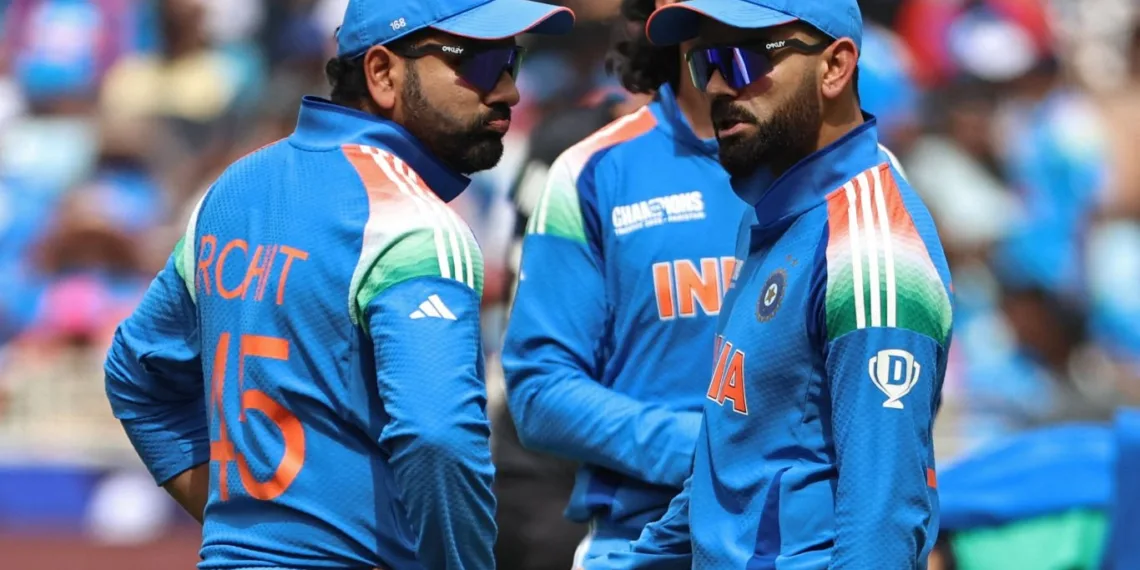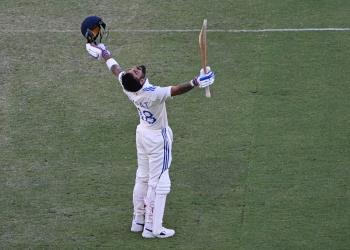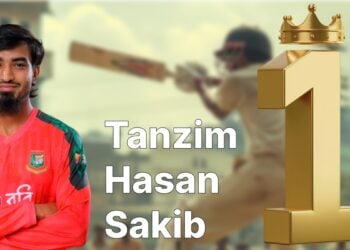The ODI Super League is set for a dramatic resurrection from 2028, just five years after being controversially scrapped following the 2023 World Cup, as the International Cricket Council attempts to breathe life back into the struggling 50-over format. The revival proposal emerged from ICC’s quarterly meetings in Dubai, where a working group led by former New Zealand batter Roger Twose recommended restoring structure to bilateral ODI cricket that has been drifting aimlessly since the league’s discontinuation.
Table of Contents
The Rise and Fall of a Short-Lived Concept
The 13-team league, which only began in July 2020, had been developed in a bid to create more context for the waning 50-over format. But it fell by the wayside amid an increasingly cramped calendar much to the chagrin of smaller Full Members and Associates.

The ODI Super League’s brief existence tells the story of good intentions crushed by logistical realities. Launched in July 2020 during the pandemic, the competition aimed to solve what many considered cricket’s most pressing problem—bilateral ODI series had become meaningless exhibitions, devoid of context beyond fleeting national pride.
How the Original Super League Worked
| Component | Details |
|---|---|
| Teams | 13 (12 Full Members + Netherlands) |
| Structure | Each team plays 8 opponents in 3-match series |
| Home/Away Split | 4 home series, 4 away series |
| Total Matches | 24 ODIs per team over the cycle |
| Points | 10 points per match won |
| Qualification Prize | Top 7 teams + host (India) qualify directly for 2023 World Cup |
| Penalty | Bottom 5 teams forced into 10-team qualifying tournament |
The stakes were real and substantial. Teams like South Africa, who traditionally expected automatic World Cup qualification, found themselves scrambling for points after unexpected losses to Ireland and the Netherlands. The pressure became so intense that Cricket South Africa controversially withdrew from a three-match series in Australia in January 2023, effectively surrendering 30 crucial Super League points to prioritize their domestic T20 league launch.
In a low-key announcement last year, the ICC effectively scrapped the Super League going forward in announcing the 2027 World Cup will be expanded to 14 teams. This decision, made without fanfare or extensive consultation, left bilateral ODI cricket once again adrift without any greater context between major tournaments.
Why Was It Scrapped? The Calendar Crisis
The explanation for the Super League’s demise can be summarized in one phrase that has become cricket’s most overused excuse: “an increasingly cramped calendar.”
Modern international cricket resembles a Tetris game where administrators frantically try to fit Tests, ODIs, T20Is, franchise leagues, and multi-format tours into a 12-month schedule that simply cannot accommodate everything. Something had to give, and the ODI Super League became the sacrificial offering.
The competing priorities that killed the original Super League included:
- The World Test Championship: Taking precedence as the flagship ICC competition
- Franchise leagues: The IPL, Big Bash, PSL, CPL, and others demand player availability
- Bilateral agreements: Long-standing commitments between cricket boards for specific tours
- ICC events: World Cups, T20 World Cups, Champions Trophy creating immovable fixtures
- Player workload management: Growing concerns about burnout and injury
The proposal did not detail how many teams would be part of a new league, which can only return from 2028. This vagueness suggests ICC administrators recognize the calendar constraints that doomed the first iteration haven’t magically disappeared.
The Smaller Nations’ Perspective: A Devastating Loss
“The Super League could help revitalise the 50-over format,” one administrator said. “Maybe the problem is not that the format is necessarily dead, it’s finding the proper structure.”
For cricket’s smaller Full Members—teams like Ireland, Zimbabwe, Afghanistan, and the Netherlands—the Super League’s cancellation represented a devastating blow to their development aspirations. These nations don’t have the financial clout or historical relationships to regularly secure bilateral series against India, England, or Australia.
The Super League guaranteed them competitive fixtures against cricket’s elite. An Irish team that had shocked South Africa could legitimately claim a place in the same league as the game’s traditional powers. The Netherlands, despite their Associate status, had earned inclusion through consistent performances.
When the league disappeared, so did those guaranteed opportunities. Ireland might play England once every few years if the schedule permits. Zimbabwe might host a touring team if broadcaster interest justifies it. Afghanistan’s home fixtures remain perpetually complicated by geopolitical realities.
The disparity in opportunity becomes stark when examining the fixture lists:
Annual ODI Opportunities (Estimated)
| Team Type | Typical ODI Matches Per Year |
|---|---|
| Big Three (India, England, Australia) | 25-35 matches |
| Traditional Powers (South Africa, New Zealand, Pakistan) | 20-30 matches |
| Smaller Full Members (Ireland, Afghanistan, Zimbabwe) | 10-20 matches |
| Associates (Netherlands, Scotland, etc.) | 5-15 matches |
The Super League helped level this playing field by guaranteeing matches for everyone involved. Its removal reinforced the existing hierarchy where commercial considerations determine who plays whom.
The Format’s Identity Crisis: Is ODI Cricket Dying?
The question underlying all Super League discussions is whether the 50-over format itself faces extinction. Caught between Test cricket’s traditional prestige and T20’s explosive popularity, ODIs occupy an uncomfortable middle ground.
The symptoms of ODI cricket’s decline are evident:
- Declining attendance: Empty stadiums for bilateral series outside major rivalries
- Player prioritization: Stars increasingly choosing franchise leagues over ODI commitments
- Broadcaster disinterest: Reduced broadcasting fees for ODI series compared to T20s
- World Cup consolidation: The previous two World Cups featured only 10 teams, down from 14 in earlier editions
Yet reports of ODI cricket’s death may be premature. Many members who attended the ICC meeting felt that the 50-over format is not near extinction but can survive if provided a proper structure to it.
The 2023 ODI World Cup in India demonstrated the format’s enduring appeal when properly presented. Matches drew massive crowds, television viewership shattered records, and the tournament generated enormous commercial success. The final between India and Australia attracted an estimated 400 million viewers globally.
This suggests the problem isn’t necessarily the format itself—it’s the lack of context for bilateral series between World Cups. Fans will watch meaningful ODI cricket; they’re just not interested in random three-match series with nothing at stake beyond fleeting bragging rights.
The Revival Plan: What Might Change?
The proposal did not detail how many teams would be part of a new league, which can only return from 2028. This lack of specificity leaves many questions about how a revived Super League might differ from its predecessor.
Potential modifications under consideration:
Possible Structural Changes
| Element | Original Format | Potential Revision |
|---|---|---|
| Number of Teams | 13 | Could expand to 14-16 or reduce to 10-12 |
| Cycle Length | 2 years | Might extend to 3-4 years for better scheduling |
| Series Length | Fixed 3 matches | Could allow 2-5 match series with proportional points |
| Home/Away Balance | 4 home, 4 away | Might become more flexible |
| World Cup Qualification | Top 7 qualify directly | Could align with expanded 14-team format |
The key challenge is creating a structure flexible enough to accommodate the packed calendar while rigid enough to maintain competitive integrity. Too flexible and teams manipulate scheduling to their advantage; too rigid and the calendar constraints that killed the first version resurface.
There does not appear to be any push to increase the number of teams at 50-over World Cups, which will be a 14-team competition in 2027 after being limited to just ten in the previous two editions. This expansion to 14 teams suggests any revived Super League would need to determine qualification pathways for approximately 6-8 teams beyond the automatically qualified host nation.
The Counter-Argument: Why Some Believe Revival Won’t Work
Not everyone enthusiastically embraces the Super League’s return. Skeptics point to fundamental problems that structural tinkering cannot solve:
1. The Calendar Constraints Haven’t Changed
The same scheduling pressures that killed the Super League in 2023 remain. If anything, they’ve intensified with franchise leagues proliferating globally. How will a revived league succeed where its predecessor failed?
2. Bilateral Agreements Trump ICC Competitions
Cricket boards earn substantial revenue from bilateral series, particularly those involving India. They’re reluctant to surrender scheduling flexibility to ICC-mandated fixtures, especially if those fixtures generate less commercial value.
3. Player Workload Concerns
International cricketers already play too much cricket across all formats. Adding mandatory ODI Super League fixtures increases their burden at a time when player welfare has become a major concern.
4. The Big Three Problem
India, England, and Australia generate the majority of cricket’s global revenue. Any structure requiring them to play smaller nations regularly faces resistance because those matches typically draw lower broadcast audiences and generate less commercial value.
5. Format Relevance Questions
If ODI cricket genuinely is dying, does adding a Super League structure change that fundamental reality? Or does it simply rearrange deck chairs on the Titanic?

What About the World Test Championship Model?
The Super League revival discussions occurred alongside debates about expanding the World Test Championship to include all 12 Full Members. The next World Test Championship (WTC) cycle is likely to feature all 12 Full Members in one division after plans to split nations into two tiers failed to gain widespread support.
The WTC’s experience offers both cautionary tales and potential lessons for ODI Super League administrators:
What the WTC Got Right:
- Created genuine context for Test series
- Established clear qualification pathway to a prestigious final
- Maintained flexibility within a structured framework
- Generated increased media attention for Test cricket
What the WTC Struggled With:
- Uneven series distribution (some teams play more Tests than others)
- Points percentage system perceived as confusing
- Weather and pitch conditions creating unequal playing fields
- Financial challenges for smaller nations hosting Tests
A revived ODI Super League could learn from these successes and failures. The percentage points system that confused Test cricket fans might work better in ODIs where match numbers are more standardized. The qualification excitement that made the WTC final compelling could translate effectively to World Cup qualification races.
The Associate Nation Perspective: Hope Renewed
For Associate nations and smaller Full Members, the Super League’s potential return represents renewed hope for regular high-level competition. However, it was eventually discontinued amid an increasingly congested international calendar, a decision that disappointed many smaller Full Members and Associate nations.
Countries like Scotland, Namibia, Oman, and Papua New Guinea dream of qualifying for major tournaments but struggle to secure fixtures against established nations. The original Super League gave the Netherlands—technically an Associate—equal standing with Full Members. A revived league could expand opportunities further.
The financial implications matter enormously. When Ireland or Afghanistan hosts a Super League match against India or England, broadcast revenue flows into their cricket boards. These fixtures provide crucial funding for grassroots development, infrastructure improvements, and player payments.
Beyond finances, regular competition against elite opponents accelerates player development. Afghan spinners improved dramatically through IPL exposure and matches against top nations. Irish batsmen learned to handle pressure situations by facing quality bowling attacks. A structured league ensures these development opportunities occur regularly rather than sporadically.
The Fan Perspective: Would You Like to See It Return?
The article’s opening question—”would you like to see it return?”—deserves honest examination of what fans actually want from ODI cricket.
Arguments For Revival:
- Bilateral series would have meaning beyond national pride
- Smaller nations get guaranteed fixtures against top teams
- World Cup qualification races create sustained interest
- Every match matters, increasing competitive intensity
- Clear structure helps fans follow and understand stakes
Arguments Against Revival:
- Calendar is already too crowded with cricket
- Prefer fewer, higher-quality ODI series
- Franchise leagues more entertaining than bilateral ODIs
- Format selection should be market-driven, not mandated
- Focus should be on making existing cricket better, not adding more
Social media reactions to the revival news reveal divided opinions. Some fans nostalgically remember the Super League’s brief existence and welcome its return. Others question whether adding more structured cricket solves the format’s fundamental relevance problems.
The generational divide appears significant. Older fans who grew up with ODI cricket as the premier format tend to support revival efforts. Younger fans raised on T20’s instant gratification often view 50-over cricket as unnecessarily long regardless of competitive structure.
The 2028 Timeline: Why So Long?
The proposal did not detail how many teams would be part of a new league, which can only return from 2028. The three-year gap between proposal and implementation might seem excessive, but reflects the complexity of international cricket scheduling.
Cricket boards have already negotiated bilateral agreements extending through 2026-27. These contracts involve substantial financial commitments that cannot be easily renegotiated. The Future Tours Programme (FTP)—cricket’s equivalent of fixture scheduling—is typically planned 3-4 years in advance.
A 2028 launch allows:
- Current bilateral agreements to expire naturally
- Boards to negotiate new agreements incorporating Super League fixtures
- ICC to finalize competition structure and qualification mechanisms
- Broadcasters to adjust their coverage plans and bidding strategies
- Player associations to negotiate workload management protocols
The timeline also aligns with the cycle following the 2027 ODI World Cup. Starting a new Super League immediately after a World Cup provides maximum time for the qualification race to unfold before the next tournament.
Structure Alone Won’t Save ODI Cricket
The ODI Super League’s planned revival represents the ICC’s recognition that bilateral 50-over cricket desperately needs context to survive. “Maybe the problem is not that the format is necessarily dead, it’s finding the proper structure,” as one administrator hopefully suggested.
Yet structure alone cannot solve ODI cricket’s deeper challenges. The format faces existential questions about its place in cricket’s ecosystem. Test cricket offers tradition, technique, and tactical depth. T20 cricket delivers explosive entertainment and commercial success. ODIs must articulate what unique value they provide—and provide it compellingly.
The original Super League demonstrated that structure can create meaning for bilateral series. South Africa’s desperate scramble for qualification points, Ireland’s giant-killing performances, and the Netherlands’ inclusion in elite cricket all generated genuine storylines that transcended individual matches.
Whether a revived league succeeds depends on learning from the first version’s failures. The calendar constraints that killed the original Super League haven’t disappeared—they’ve intensified. Any new structure must be flexible enough to accommodate bilateral agreements, franchise leagues, and player welfare concerns while maintaining competitive integrity.

For smaller cricket nations, the Super League’s return offers crucial opportunities for development and revenue. For fans, it promises meaningful context for bilateral series that have drifted aimlessly since 2023. For the 50-over format itself, the revival represents perhaps a final opportunity to prove its continued relevance in cricket’s crowded landscape.
The question isn’t just whether fans would like to see the Super League return—it’s whether cricket can afford to try living without it. The answer, apparently, is no. Whether that proves correct will become clear from 2028 onward, when the ODI Super League gets its second chance to save the format from irrelevance.
Read More: Barcelona’s Camp Nou Renovation Scandal: €1.87 Million In Fines For 218 Labor Violations
FAQs
What was the ODI Super League and why was it scrapped?
The ODI Super League was a 13-team competition launched in July 2020 to provide context for bilateral ODI series and serve as World Cup qualification. Each team played 24 ODIs over two years, with the top 7 qualifying directly for the 2023 World Cup. It was scrapped after 2023 due to an increasingly cramped international cricket calendar that couldn’t accommodate all fixtures.
When will the ODI Super League return? The
The ODI Super League is proposed to return from 2028, three years after being discontinued following the 2023 World Cup. The timeline allows current bilateral agreements to expire and gives the ICC time to finalize the structure, though specific details about the number of teams and format haven’t been announced yet.
How did qualification work in the original Super League?
Each of the 13 teams played eight opponents in three-match ODI series (four home, four away), earning 10 points per win. After 24 matches, the top 7 teams plus the host nation (India) qualified directly for the 2023 World Cup. The bottom 5 teams had to play in a 10-team qualifying tournament where only the top 2 advanced.
Why do smaller cricket nations want the Super League back?
Smaller Full Members like Ireland, Afghanistan, and Zimbabwe, along with Associates like the Netherlands, relied on the Super League for guaranteed fixtures against top nations like India, England, and Australia. Without it, they struggle to secure bilateral series against elite teams, limiting both player development opportunities and crucial broadcast revenue.
What’s the main challenge facing a revived ODI Super League?
The same calendar constraints that killed the original competition remain unchanged—possibly worse. International cricket must accommodate Tests, ODIs, T20Is, the World Test Championship, multiple World Cups, and proliferating franchise leagues. Finding space for mandatory Super League fixtures without overwhelming players or conflicting with lucrative bilateral agreements represents the revival’s biggest challenge.








